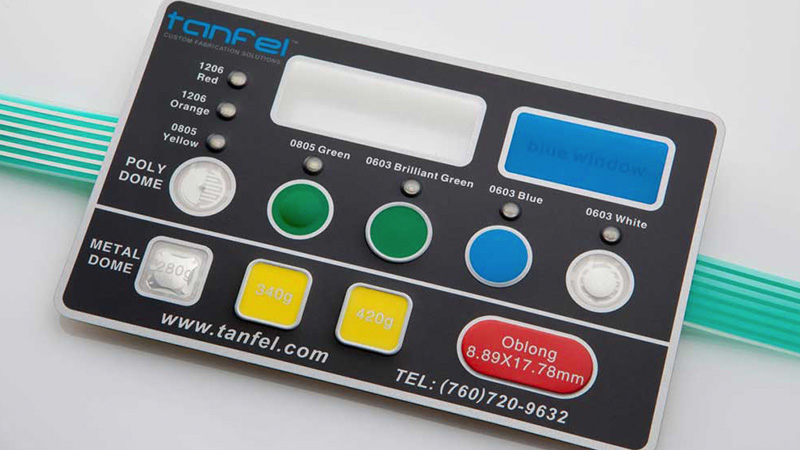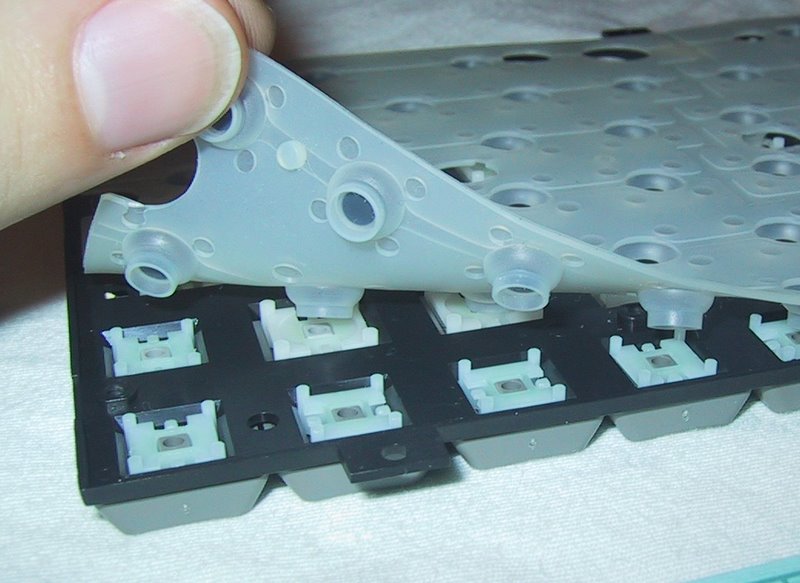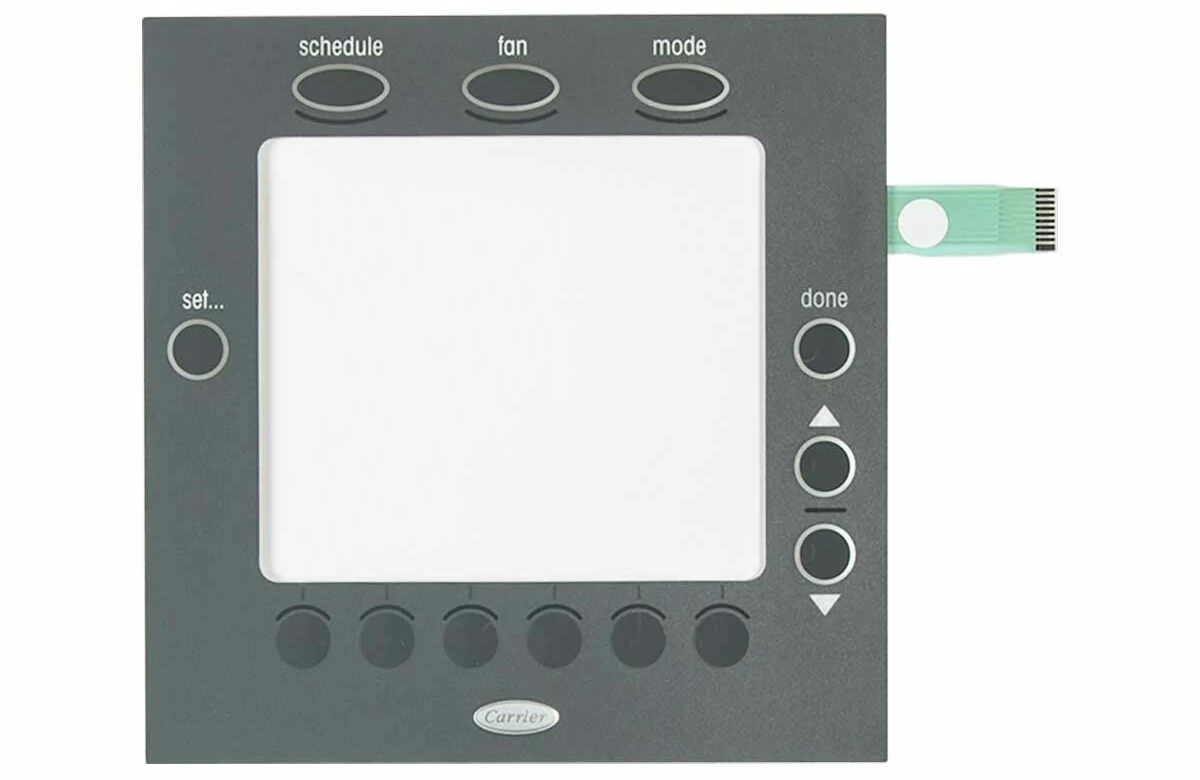Comprehending the Relevance of Membrane Switches in User Interfaces
Membrane buttons are indispensable elements in the style of effective interface, promoting not only capability yet likewise boosting aesthetic allure and user interaction. Their unique functions, such as resistance to adjustable layouts and environmental variables, make them appropriate for a varied range of applications throughout numerous sectors. As we check out the numerous benefits and future trends related to Membrane innovation, it comes to be clear that these buttons are much more than simply components; they stand for a merging of innovation and usefulness. The ramifications of this innovation on user experience are worth taking a look at additionally.
What Are Membrane Buttons?

The spacer layer, which consists of adhesive residential properties, permits for the splitting up of the circuit layer from the overlay, guaranteeing that the button stays in a non-activated state till pressed. When pressure is put on the overlay, it presses the spacer layer, bridging the void and completing the circuit in the underlying layer. This layout not just reduces the physical room needed for conventional mechanical buttons but likewise boosts the longevity of the device, as Membrane buttons are usually immune to dust, wetness, and other environmental aspects.
Typically found in applications ranging from customer electronics to medical gadgets, Membrane switches are integral to modern technology, offering a straightforward and effective user interface that lines up with modern design requirements.
Benefits of Membrane Buttons
While various switch technologies exist, Membrane Switches deal distinctive benefits that make them specifically preferable in different applications. One of the key benefits of Membrane buttons is their compact layout, which allows for space-saving executions in tools where actual estate is limited. Their slim account not only enhances visual appeal however also helps with lightweight building.
An additional substantial advantage is their resistance to environmental variables. Membrane buttons are normally sealed versus moisture, dirt, and impurities, making them ideal for use in demanding settings, such as clinical devices and industrial equipment. This toughness expands the lifespan of the button, decreasing upkeep prices and enhancing reliability.
Additionally, Membrane buttons can be tailored to satisfy details design needs, including distinct graphics and shades that improve user interaction. Their tactile comments alternatives can also be customized to offer a gratifying customer experience. Additionally, Membrane buttons are cost-effective, specifically in high-volume applications, as they can be produced effectively.
Applications in Various Industries

In the customer electronic devices sector, Membrane switches prevail in tools such as microwaves, washing machines, and push-button controls. Their responsive comments and aesthetic options boost individual experience while providing a sleek, modern-day appearance. Furthermore, auto manufacturers utilize Membrane switches in dashboard controls and infotainment systems, where area is restricted, and individual engagement is important.
Moreover, the industrial market leverages Membrane buttons in control panels for machinery and equipment, permitting intuitive procedure in commonly extreme atmospheres. Their resistance to chemicals and moisture guarantees longevity and integrity in these applications. Generally, the flexibility of Membrane Switches adds dramatically to their extensive usage, making them important in numerous technical domains.
Design Factors To Consider for Membrane Switches

When making Membrane buttons, numerous essential factors to consider need to be considered to make certain optimum capability and user experience. The option of materials is critical; choosing durable, top quality substrates can improve the switch's long life and resistance to ecological elements such as dampness and temperature level changes.
Second of all, the layout of the graphic overlay should focus on clearness and simplicity of usage. Icons and message have to be understandable, and the design must promote instinctive interaction (membrane switches). Furthermore, tactile official site responses is necessary; incorporating a responsive dome or other devices can enhance the individual experience by providing physical verification of activation
An additional crucial aspect is the switch's electric efficiency. Developers have to make sure that the conductive traces are appropriately developed to lessen resistance and prevent signal disturbance. This includes assessing the required actuation pressure and making sure compatibility with the electronic parts they will certainly interface with.

Future Trends in Membrane Modern Technology
As technology proceeds to breakthrough, Membrane buttons are positioned to advance substantially, driven by technologies in materials and producing strategies. One arising pattern is the incorporation of innovative materials, such as flexible substrates and conductive inks, which enhance sturdiness and minimize the overall weight of Membrane switches. These materials not only boost the tactile feedback but likewise permit the layout of buttons that can withstand harsher ecological problems.
In addition, the combination of touch-sensitive technologies is changing traditional Membrane Switches right into even more interactive individual interfaces. Capacitive touch sensing units installed within Membrane switch panels can offer a much more user-friendly and responsive user experience, aligning with the expanding need for sleek, modern-day layouts in customer electronic devices.
Furthermore, developments in printing methods, such as electronic and 3D printing, allow rapid prototyping and customization of Membrane buttons. This versatility permits makers to react extra swiftly to market needs and customer preferences.
Lastly, sustainability is becoming a substantial focus, with suppliers discovering environmentally friendly products and procedures. As these trends unravel, the future of Membrane modern technology promises enhanced performance, visual appeal, and environmental responsibility, strengthening their role in advanced interface throughout various industries.
Final Thought
In verdict, Membrane Switches stand for an important element in the design of interface, incorporating capability with aesthetic adaptability. Their advantages, consisting my blog of sturdiness and resistance to environmental elements, make them appropriate for diverse applications across numerous industries. Thoughtful layout factors to consider boost user interaction and experience. As innovations in technology continue, the development of Membrane switches is expected to more improve interface, driving development and enhancing functionality in a significantly complicated technical landscape.
Membrane buttons are essential parts in the style of reliable individual interfaces, facilitating not only capability yet additionally improving aesthetic allure and user communication.Membrane Switches offer as an important part in numerous individual interfaces, assisting in a seamless communication between users and digital devices.While various switch modern technologies exist, Membrane Switches deal distinctive advantages that make them specifically preferable in numerous applications.Furthermore, Membrane buttons can be personalized to meet particular layout requirements, integrating distinct read what he said graphics and shades that boost individual communication.In final thought, Membrane Switches stand for a crucial part in the design of customer interfaces, combining capability with visual adaptability.